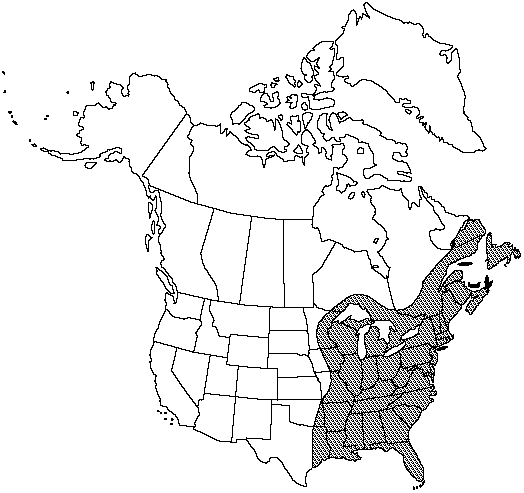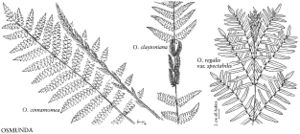Difference between revisions of "Osmunda cinnamomea"
Sp. Pl. 2: 1066. 1753.
FNA>Volume Importer |
(No difference)
|
Revision as of 18:22, 26 July 2019
Leaves pinnate-pinnatifid; petioles slightly shorter than blades, not winged, with light-brown hairs when young, glabrate with age. Sterile leaves ovate to lanceolate, ca. 0.3–1.5 m; pinnae broadly oblong with persistent tuft of hairs on abaxial surface at base; ultimate segments with base obtuse, margins entire, apex usually mucronate. Fertile leaves with no expanded pinnae, green, becoming brownish, shorter and narrower than sterile leaves, withering after sporulation. Sporangia brown. 2n =44.
Habitat: Moist areas, acidic soils, frequently in vernal seeps
Elevation: 0–2300 m
Distribution

St. Pierre and Miquelon, N.B., Nfld., N.S., Ont., P.E.I., Que., Ala., Ark., Conn., Del., Fla., Ga., Ill., Ind., Iowa, Ky., La., Maine, Md., Mass., Mich., Minn., Miss., Mo., N.H., N.J., N.Y., N.C., Ohio, Okla., Pa., R.I., S.C., Tenn., Tex., Vt., Va., W.Va., Wis., Mexico, West Indies, Central America, South America, Asia.
Discussion
Many forms of Osmunda cinnamomea have been described from within the flora area. It is widely cultivated as an ornamental.
Selected References
None.
